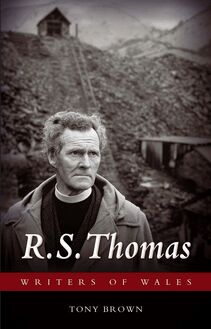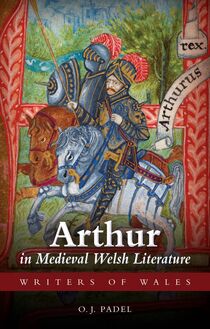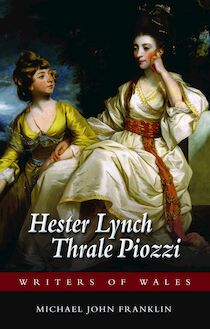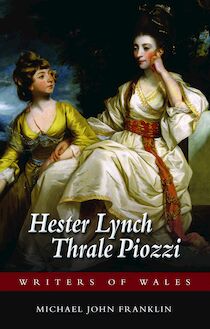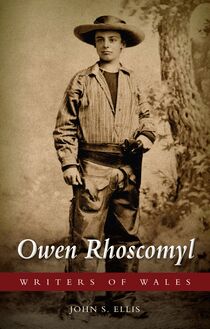Arthur in Medieval Welsh Literature , livre ebook
58
pages
English
Ebooks
2013
Vous pourrez modifier la taille du texte de cet ouvrage
Obtenez un accès à la bibliothèque pour le consulter en ligne En savoir plus
Découvre YouScribe en t'inscrivant gratuitement
Découvre YouScribe en t'inscrivant gratuitement
58
pages
English
Ebooks
2013
Vous pourrez modifier la taille du texte de cet ouvrage
Obtenez un accès à la bibliothèque pour le consulter en ligne En savoir plus
Publié par
Date de parution
15 mai 2013
Nombre de lectures
2
EAN13
9781783165698
Langue
English
Although the legends of Arthur have been popular throughout Europe from the middle ages onwards, the earliest references to Arthur are to be found in Welsh literature, starting with the Welsh-Latin Historia Brittonum which dates from the ninth century. By the twelfth century Arthur was a renowned figure wherever Welsh and its sister languages were spoken. O. J. Padel provides an overall survey of medieval Welsh literary references to Arthur and emphasizes the importance of understanding the character and purpose of the texts in which allusions to Arthur occur. Texts from different genres are considered together and shed new light on the use which different authors make of the multifaceted figure of Arthur, from the folk legend associated with magic and animals to the literary hero, soldier and defender of country and faith. Other figures associated with Arthur, such as Cai, Bedwyr and Gwenhwyfar, are also discussed. Arthur in Medieval Welsh Literature is an important and revealing contribution to Arthurian studies and will appeal to anyone interested in understanding more about the legends of Arthur and their sources in medieval Welsh tradition.
Publié par
Date de parution
15 mai 2013
Nombre de lectures
2
EAN13
9781783165698
Langue
English
Writers of Wales
Arthur in Medieval Welsh Literature
Editors:
Meic Stephens
Jane Aaron
M. Wynn Thomas
Honorary Series Editor:
R. Brinley Jones
Other titles in the Writers of Wales series:
R. S. Thomas (2013), Tony Brown
Kate Roberts (2012), Katie Gramich
Ruth Bidgood (2012), Matthew Jarvis
Geoffrey of Monmouth (2010), Karen Jankulak
Herbert Williams (2010), Phil Carradice
Rhys Davies (2009), Huw Osborne
Writers of Wales
Arthur in Medieval Welsh Literature
O. J. Padel
University of Wales Press Cardiff 2013
O. J. Padel, 2013
Originally published in 2000
New edition published 2013
All rights reserved. No part of this book may be reproduced in any material form (including photocopying or storing it in any medium by electronic means and whether or not transiently or incidentally to some other use of this publication) without the written permission of the copyright owner except in accordance with the provisions of the Copyright, Designs and Patents Act 1988. Applications for the copyright owner s written permission to reproduce any part of this publication should be addressed to the University of Wales Press, 10 Columbus Walk, Brigantine Place, Cardiff CF10 4UP
www.uwp.co.uk
British Library Cataloguing-in-Publication Data. A catalogue record for this book is available from the British Library.
ISBN 978-0-7083-2625-1 eISBN 978-1-78316-569-8
The right of O. J. Padel to be identified as author of this work has been asserted in accordance with sections 77, 78 and 79 of the Copyright, Designs and Patents Act 1988.
Cover image: Detail of initial A from a charter of King Arthur (copy dated 1587). Cambridge University Archives, MS Hare A.1, fol. 1r. Reproduced by permission of the Syndics of Cambridge University Library
Contents
Preface to the new edition
Acknowledgements
1 Introduction
2 The Earliest Texts
3 Arthur s World: Culhwch and Pa r yw r porthor?
4 Other Texts of the Central Middle Ages
5 Three Dialogue Poems
6 The Matter of Britain
7 The Continuing Tradition
8 Some Arthurian Characters
9 Was There an Arthur of the Welsh?
Select Bibliography
Supplementary Bibliography (2013)
Preface to the new edition
This book first appeared twelve years ago and it has been suggested that a reprint would be useful. Naturally further work has been done in the meantime, but it has not significantly affected the discussions given here. So the text has not been altered, but a supplementary bibliography enables readers to take subsequent work into account, and an index has been added. I am grateful to Ceridwen Lloyd-Morgan for her help, and to the University of Wales Press for undertaking the reprint.
O.J.P.
Acknowledgements
Several people have helped by discussion and in other ways. I particularly thank Dr Brian Golding, Dr Nerys Ann Jones, Michael Polkinhorn and Professor Brynley Roberts; also several former students, especially Jonathan Coe, Anna Langford and Barry Lewis; and an anonymous reader for the Press; but none of them should be implicated in the views expressed here.
I
Introduction
This book is about Arthur as a literary figure in medieval Wales. It is not about the Arthur of history, if there was such a person. It is widely assumed that the legendary figure was derived from a historical one, but it is equally possible that the seemingly historical Arthur was created by the historicization of a figure of legend. The legendary figure of Arthur was remarkably consistent in local British folklore for over a thousand years, from its first appearance in the ninth century to folklore current in the nineteenth; but learned authors, the intermediaries through whom we have received our knowledge of early Welsh traditions, sometimes gave their own interpretations of the character - either for their own reasons or because they knew of Arthur s wider literary reputation - rather than giving a close portrayal of the traditional figure. For this reason it is essential, when studying the portrayal of Arthur in a particular text, to try to understand the nature and purpose of that text; yet the understanding of individual texts is naturally a subjective matter. The nature of the literary works therefore receives particular attention in the pages which follow, even though space here cannot allow for all the different interpretations that have been offered of some of the better-known texts.
Wales has no monopoly of the Arthurian legend. Although the earliest mentions of Arthur are found in the ninth-century Welsh-Latin H ISTORIA B rittonum ( The History of the Britons ), he also occurs in similar contexts in Cornwall, southern Scotland and Brittany, as soon as there are records of a kind liable to show the local folklore which was his particular domain. For our purpose the important point is not whether he was based on a historical person (for no records survive capable of answering that question), but the fact that in the early Middle Ages, by the twelfth century at the latest, he was renowned in local storytelling wherever Welsh and its sister languages were spoken.
2
The Earliest Texts
The earliest datable text mentioning Arthur is in Latin, the H ISTORIA B RITTONUM formerly attributed to Nennius. This was probably compiled in north Wales in the years 829-30. It is worth recalling, in passing, the notable absence of Arthur from an earlier Latin work, Gildas s D E E XCIDIO B RITANNIAE ( On the Ruin of Britain ), composed in the sixth century. Gildas gave a historical summary of the English takeover of Britain, and if Arthur had played a major part in the British resistance we might well have expected Gildas to name him, as he does Ambrosius Aurelianus. Likewise, Arthur is absent from Bede s E CCLESIASTICAL H ISTORY o F THE E NGLISH People, written about a century before the H ISTORIA B RITTONUM , though in Bede s case other reasons for his silence might be envisaged.
Given that the H ISTORIA B RITTONUM , dating from the ninth century, is the earliest Arthurian text, its most striking feature is that it contains two different, seemingly contradictory, portrayals of Arthur. One is the often-quoted List of Arthur s battles against the English , where Arthur is depicted as the great military leader (dux bellorum) who led the British kings against the second generation of English settlers. (The context seems to imply that Arthur was not regarded as a king himself.) Twelve battles are specified, at nine sites (four at a single site). The identification of place-names in early documents is dependent upon the context, and this list supplies so little context that safe identification is impossible for the most part; this has made the list a rich quarry for those wishing to locate Arthur in their own particular areas, wherever those may be.
The final battle, Mount Badon, probably in southern England, is no doubt the one named by Gildas - who, by implication, attributes the victory instead to Ambrosius Aurelianus. A few other battle sites are also recognizable from Welsh legend: that at the River Bassas recalls Baschurch in the Welsh Marches, named in the englyn poetry concerning Heledd; that at the city of the Legion sounds like the seventh-century battle of Chester where thousands of monks of Bangor were said to have been slaughtered. The only sites also named elsewhere as battles involving Arthur are Badon (also in the Welsh Annals, see p. 8) and the River Tryfrwyd (Tribruit): Arthur s opponent there, we learn from the poem Pa r yw r porthor? (see p. 22), was the legendary Gwrgi Garwlwyd ( Man-hound Rough-grey ), who used to slay a corpse of the Welsh every day, and two on Saturdays so as not to kill on a Sunday, according to the Triads; he was eventually killed, though not by Arthur, in one of the Three Fortunate Assassinations.
For most of the battles no detail is given, only the names, which may have been all that the author of the H ISTORIA knew of them. The more interesting battles are those where further information is given, and at these points the account begins to acquire a legendary, rather than historical, tinge: at the battle of the fort of Gwynnion Arthur carried the image of the Virgin Mary on his shoulders, put the pagan English to flight and achieved a great slaughter of them through the assistance of Christ and Mary. At Badon he personally killed 960 men in a single onslaught. The author hints at darker days to come, saying that Arthur was victorious in all his battles (he carefully avoids mention of the final battle at Camlan), and that his successes prompted the English to seek further support from their kinsmen on the Continent: the implication, not stated, was that after Arthur s day the English again extended their dominion.
The whole passage thus has a legendary quality to it, and the suggestion that it is based upon a Welsh poem, with rhymes appearing in the names of some battles, has found widespread acceptance. However, Charles-Edwards has pointed out that earlier in the H ISTORIA a similar list of four battles against the English (only three named), attributed to Vortimer (Gwrthefyr), son of Vortigern shows no sign of any rhyme-scheme, although it too has a legendary context. If the Arthurian battles were taken from a lost poem, we should expect to find comparable poems in surviving Welsh literature: according to preference, we could envisage it as similar either to that attributed to Taliesin in praise of Cyan Garwyn, the sixth-century king of Powys, listing his successful battles throughout Wales and in Cornwall, or to the legendary Arthurian poem Pa r yw r porthor? , to be discussed below (pp. 20-5), listing the achievements of Arthur and his warriors. Evidently between the time of Gildas in the sixth century and the writing of the H ISTORIA in the ninth, Arthur had become a leading figure of the British resistance in Welsh legend. This makes it odd that he was not named in the earliest prophetic poetry as a leader who would return to figh


